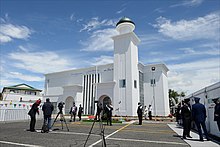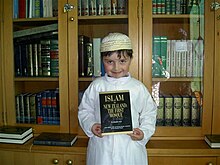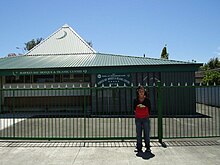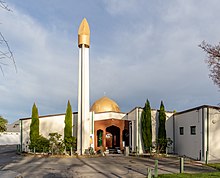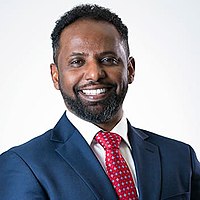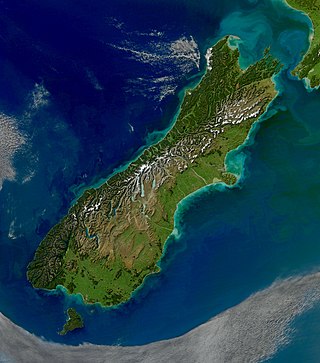
The South Island, also named Te Waipounamu in Māori, is the larger of the two major islands of New Zealand in surface area, the other being the smaller but more populous North Island. It is bordered to the north by Cook Strait, to the west by the Tasman Sea, and to the south and east by the Pacific Ocean. The South Island covers 150,437 square kilometres (58,084 sq mi), making it the world's 12th-largest island, constituting 56% of New Zealand's land area. At low altitude, it has an oceanic climate.

The University of Otago is a public research collegiate university based in Dunedin, Otago, New Zealand. Founded in 1869, Otago is New Zealand's oldest university and one of the oldest universities in Oceania.
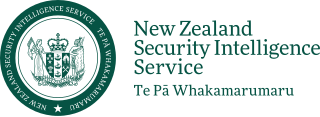
The New Zealand Security Intelligence Service is New Zealand's primary national intelligence agency. It is responsible for providing information and advising on matters including national security and foreign intelligence. It is headquartered in Wellington and overseen by a Director-General, the Minister of New Zealand Security Intelligence Service, and the parliamentary intelligence and security committee; independent oversight is provided by the Inspector-General of Intelligence and Security.

Ashburton is a large town in the Canterbury Region, on the east coast of the South Island of New Zealand. The town is the seat of the Ashburton District. It is 85 kilometres (53 mi) south west of Christchurch and is sometimes regarded as a satellite town of Christchurch.

Dunedin is the second-largest city in the South Island of New Zealand, and the principal city of the Otago region. Its name comes from Dùn Èideann, the Scottish Gaelic name for Edinburgh, the capital of Scotland. The city has a rich Māori, Scottish, and Chinese heritage.

Christchurch is the largest city in the South Island and the second-largest city by urban area population in New Zealand, after Auckland. Christchurch lies in the Canterbury Region, near the centre of the east coast of the South Island, east of the Canterbury Plains. It is located near the southern end of Pegasus Bay, and is bounded to the east by the Pacific Ocean and to the south by the Banks Peninsula. The Avon River (Ōtākaro) flows through the centre of the city, with a large urban park along its banks.
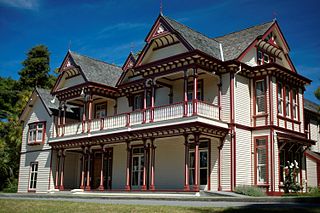
Riccarton is a suburb of Christchurch. It is due west of the city centre, separated from it by Hagley Park. Upper Riccarton is to the west of Riccarton.
The Presbyterian Church of Aotearoa New Zealand (PCANZ) is a major Christian denomination in New Zealand. A part of the Reformed tradition, it is the largest Presbyterian denomination in New Zealand, and known for its relatively progressive stance on doctrine and social issues in comparison with smaller Presbyterian churches in the country. Presbyterianism was introduced to New Zealand by early 19th century settlers, particularly from Scotland and Ireland. It was historically most prevalent in the Otago region. The PCANZ was formed in 1901 with the amalgamation of southern and northern Presbyterian churches. It claims around 29,000 members.
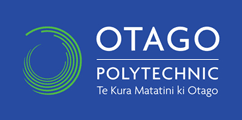
Otago Polytechnic was a public New Zealand tertiary education institute, centred in Dunedin with additional campuses in Cromwell and Auckland. Otago Polytechnic provided career-focused education and training, offering a range of New Zealand accredited postgraduate qualifications, degrees, diplomas and certificates at levels 2–10. In November 2022, it was formally merged into the new national mega polytechnic Te Pūkenga, ending its existence as an independent entity.
The Federation of Islamic Associations of New Zealand (FIANZ) was set up in April 1979 by Mazhar Krasniqi and other Muslim community leaders to draw together the regional Islam organisations of Auckland, Wellington and Canterbury into one centralised New Zealand-wide body.

Mazhar Shukri Krasniqi (1931–2019) was a New Zealand Muslim and Albanian community leader of Kosovar Albanian descent, businessman and human rights activist. He was both the first president of the New Zealand Albanian Civic League and Federation of Islamic Associations of New Zealand (FIANZ).
New Zealand Muslim Association (NZMA) established in 1950 is the oldest Islamic institution in New Zealand. The New Zealand Muslim Association (NZMA) was formed in the year 1950, with the objective to serve all Muslims brothers and sisters within New Zealand. The first chairman of NZMA was Marhum Suilman Ismail Bhikoo. He was instrumental in establishing a Muslim burial ground at Waikumete Cemetery in Glen Eden, West Auckland in 1966. Former presidents of the NZMA include Kosovo-born Mazhar Krasniqi and Nazmi Mehmeti from North Macedonia (1963). The longest serving Executive Committee member between 1956 and 1981 was Hajji Avdo Musovich (1919–2001), originally from Montenegro. NZMA is responsible for the five branches; Ponsonby mosque, Ranui mosque, Avondale Islamic Centre, Birkenhead Islamic Centre and Kelston Islamic Centre. More information can be found on the NZMA website: www.nzma.kiwi.nz

Hinduism is the second largest religion in New Zealand. It is also one of the fastest-growing religions in New Zealand. According to the 2018 census, Hindus form 2.65% of the population of New Zealand. There are about 123,534 Hindus in New Zealand.

Religion in New Zealand encompasses a wide range of groups and beliefs. New Zealand has no state religion and freedom of religion has been protected since the signing of the Treaty of Waitangi.
Māori Muslims are a small minority community in New Zealand.

Buddhism is New Zealand's third-largest religion after Christianity and Hinduism standing at 1.5% of the population of New Zealand. Buddhism originates in Asia and was introduced to New Zealand by immigrants from East Asia.
Albanian New Zealanders are residents of New Zealand who are of Albanian heritage or descent, often from Kosovo, with smaller numbers from Albania and a few from North Macedonia. Albanian New Zealanders are mainly concentrated in the city of Auckland. The Albanian community has been present in New Zealand since the mid twentieth century and are an integrated part of its society.

The Christchurch mosque shootings were two consecutive mass shootings on two mosques in Christchurch, New Zealand on 15 March 2019. They were committed by Brenton Tarrant who entered both mosques during Friday prayer, firstly at the Al Noor Mosque at 1:40 p.m. and later at the Linwood Islamic Centre at 1:52 p.m.

The Al Noor Mosque is a Sunni mosque in the Christchurch suburb of Riccarton in New Zealand. It was built between 1983 and 1985 by the Muslim Association of Canterbury, an organisation founded in 1977 that also manages the mosque building. It was the primary target of the Christchurch mosque shootings of 15 March 2019.

